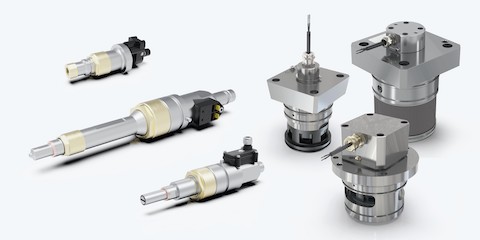Leading engine injection system manufacturer Woodward, has announced it is developing a comprehensive new range of injection systems applicable for new and future fuel powered engines including methanol and ammonia.
Designed to support the global energy transition to low carbon fuels, the comprehensive portfolio of injection systems for P2X fuels in large engines will range from 100 kW/Cylinder to over 1000 kW/Cylinder – to enable all possible combustion concepts.
For applications that require the highest levels of power density and efficiency, Woodward is developing a High-Pressure Dual-Fuel (HPDF) platform for methanol and ammonia injection with full diesel backup capability.

The new range of direct solenoid actuated injection systems is perfectly tailored to meet market requirements for simpler and retrofitted systems, including methanol injection systems for Port Fuel Injection (PFI) and Direct Injection (DI). The injectors are designed for optimal atomization of the fuel to enable good mixing and minimize wall wetting.
For gas engines that are adapted to run on gaseous P2X fuels such as hydrogen and ammonia, Woodward’s well-known SOGAV gas admission valves are also being optimized to withstand the properties of these fuels such as poor lubricity, corrosion behavior and hydrogen embrittlement.
“The combustion engine industry is accelerating its efforts to decarbonize and switch from fossil fuels to alternative fuels produced from renewable sources (P2X) such as hydrogen, methanol and ammonia, and as a leading global injector manufacturer we need to ensure we have tailor made solutions for this transition.
“We are currently collaborating closely with engine OEM’s to design and test a range of injector systems that will meet the performance demands of new engines. Current development stages range from full field validation through to SCE and R&D phase with extremely positive results to date,” said Dr. Michael Willmann, Director of Engineering - Large Engine Systems at Woodward.
“There is a broad variety of combustion concepts for these fuels, and the best choice strongly depends on the target application for the user, whether they are in the marine and shipping sector, power generation or wider industry applications where these engines will be used. We are seeing the creation of a range of solutions to meet specific needs, ” said Willman.

Follow us on social media: